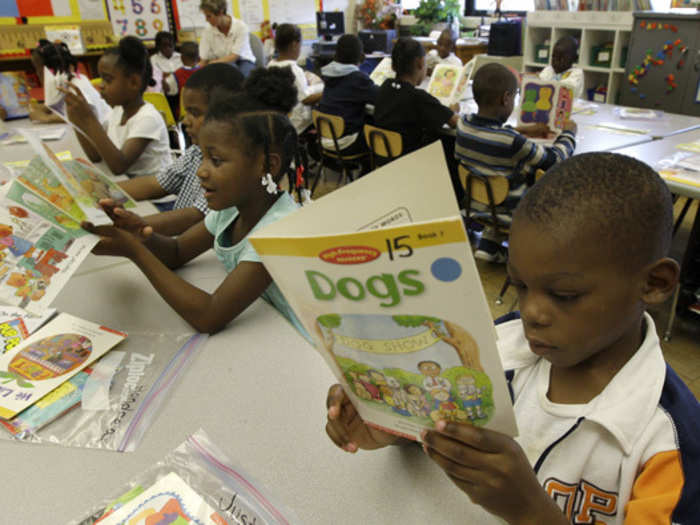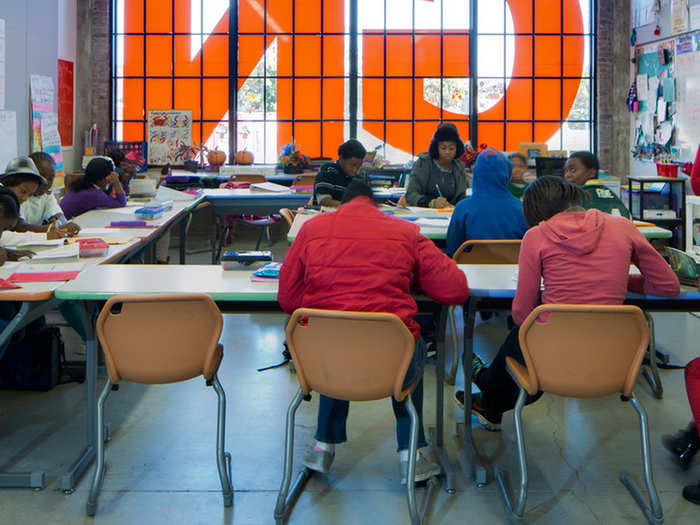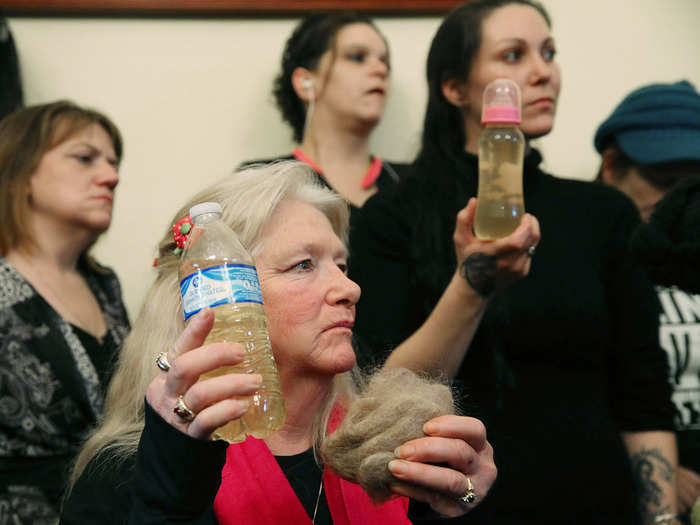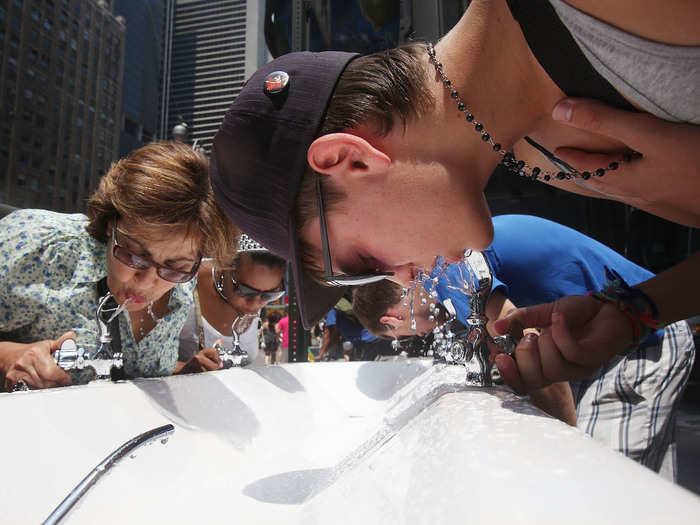- Home
- slideshows
- miscellaneous
- 9 places in the US where kids can't safely drink the water at school
9 places in the US where kids can't safely drink the water at school
As recently as 2018, some Los Angeles schools were reportedly still dealing with dangerous amounts of lead in their water.

Maine has some of the most rampant lead problems in the country when it comes to schools and day-care centers.

According to a 2016 nationwide drinking water analysis from USA Today, "one water sample at a Maine elementary school was 41 times higher" than the EPA action level of a 15-part-per-billion lead threshold.
High lead levels were recorded at other fountains and faucets in at least 25 different facilities in the state.
This year, Maine lawmakers are considering new legislation that would require schools to do more testing, as the Portland Press Herland reported in February.
More than 50 Detroit public schools have found out that their drinking water is contaminated with high levels of lead, copper, or both.

The problem is widespread in the Motor City. In September, the superintendent turned off the taps at all Detroit schools and dispatched coolers and bottled water across the city. This cost $200,000 for the first two-month supply, as Crain's Detroit Business reported.
Within weeks, donations began pouring in to help cover the bulk of the $3 million cost of new hydration stations for schools, according to an October report from the Detroit Free Press.
More than half of the Atlanta public schools that did tests in 2016 showed elevated levels of lead in the water.

Some schools had concentrations of lead "as high as 15 times the federal limit for water systems," the Atlanta Journal Constitution reported.
Portland schools only recently re-opened their taps, following 2016 test results that showed most of the water kids were drinking at school was tainted with lead.

Years of bad test results surfaced in 2016, and spurred the city to undertake a two-year-long effort to replace old fixtures and re-test the water.
In June 2018, school district officials announced that nearly all the bad fixtures had been replaced and that the water at school would be safe to drink again, as The Oregonian reported.
At least four schools in Polk County, Florida were found to have high lead levels.

Some students in Polk County were served bottled water during this school year.
Three drinking fountains on Chicago's South Side tested positive for high levels of lead in 2016.

After those results came to light, one school started offering free blood testing to kids, as the Chicago Tribune reported.
In nearby Hammond, Indiana, lead-contaminated water was found in nine schools last August.
If a tap has been sitting idle for a while, as school faucets often do over summer break, it can help to run it cold for 1-2 minutes before taking a sip.
In 2016, high levels of lead were also found in 30 different Newark public schools.

After the discovery, more than 1,000 Newark schoolkids had their blood-lead levels tested. Fortunately, only a handful of the tests came back with what the Centers for Disease Control (CDC) considers worrisome, as The New York Times reported.
But technically, there is no such thing as a safe level of lead for people to be drinking. Lead can cause brain damage and make it hard for students to concentrate and learn at school.
At least two dozen schools in the Baltimore, Maryland region were found to have elevated lead levels in their water.

A new state law in Maryland requires water testing in schools — which is how the elevated lead levels were discovered in the Baltimore area, as the Baltimore Sun reported in 2018. More than 600 other schools across the state have asked for more time to perform their tests.
The reason tap water can be contaminated with lead is simple: There's no US regulation that requires schools to test for lead.

The US Environmental Protection Agency (EPA) has a national rule about lead and copper concentrations in water that is designed to keep drinking water safe. But the regulation doesn't require testing of every tap.
"That's really the only safe drinking water rule we have right now that regulates lead in water," Megan Glover, co-founder of 120 Water Audit, told Business Insider.
Her company has tested the water at 4,000 day-cares and schools across the US.
"We tell our clients when we work with them: You should expect that over half, actually 65% of your facilities, are going to have an exceedance," Glover said.
However, the US has taken regulatory steps to improve public health and get rid of lead before. The phase-out of leaded gasoline and paint in the 1970s led to a measurable brainpower boost in kids: As blood-lead levels dropped, IQs went up between 2.2% and 4.7%.
Here's what you can do if you're worried about lead.

If you're worried about the drinking water at a particular school, check to see if your city issues a report. Schools in New York and DC, for example, have information about their lead testing available online.
There's also an interactive map from the National Drinking Water Alliance that tracks media reports of contaminated water.
Twenty-four states also mandate, or are considering mandating, some school water testing. Some schools are already making changes, installing new water fountains and bottle-filling stations for students that include lead-reducing filters.
Popular Right Now
Popular Keywords
Advertisement